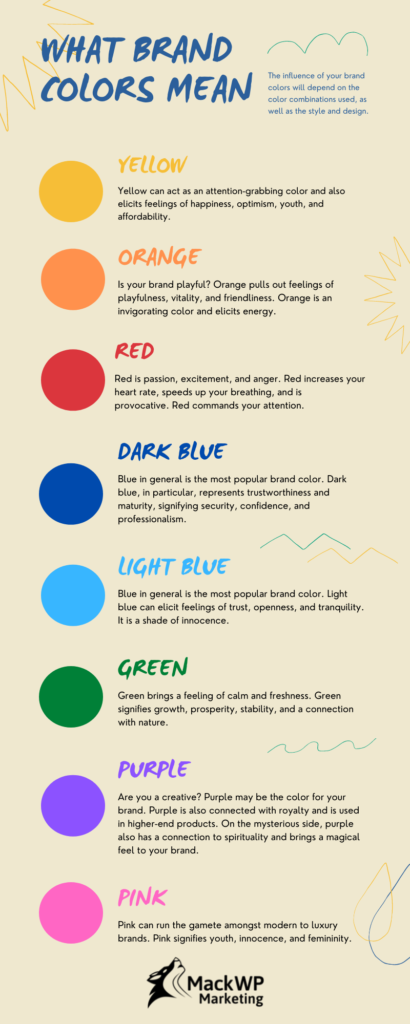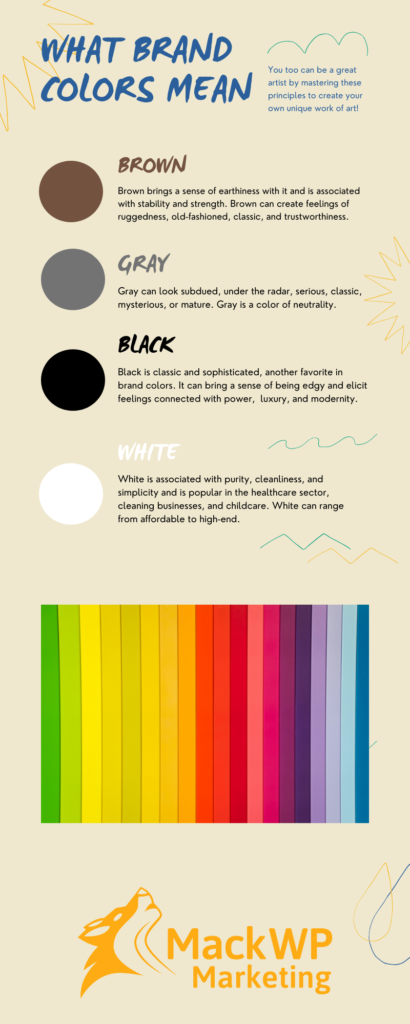
Whatever your reason for launching a brand is, color is important. You may be jumping the ‘corporate America’ ship and starting your own service provider business. You may be a tech wiz and launching a disrupting, world-changing startup. You may run a non-profit raising money to help endangered species.
Per colorcom.com “92.6 percent said that they put most importance on visual factors when purchasing products. Only 5.6 percent said that the physical feel via the sense of touch was most important. Hearing and smell each drew 0.9 percent.
When asked to approximate the importance of color when buying products, 84.7 percent of the total respondents think that color accounts for more than half among the various factors important for choosing products.”
You may also read our recent blog post “What Your Brand Colors Say About Your Brand” here.
Needless to reiterate, color is important. Now that we’re here, how do you choose the right colors for your brand?
How to choose impactful colors for your brand
Before we dive in, just in case you weren’t paying attention, your brand colors are important. That being said, we’re not going to delve more into the importance. If you want to know more one why brand colors are important, check out our recent blog post linked above.
First, understand and identify your brand
Before we get into colors, you need to understand your brand inside and out. What is its message, mission, goals? How do you want your target audience and readers to feel when they see your brand and hear your message. Do you want them to be joyful, excited, passionate, empowered, confident, more informed?
What is the personality of your brand? Is it confident, charming, reliable? Is your brand inspirational, helping to motivate others? Is your brand fun, spreading lightheartedness, and humor amongst your audience.
Having a clear understanding of your brand, its goals, tone, messaging, and how your want your target audience and readers to perceive it is paramount when choosing the colors for your brand. While your products may be organic which may be associated with a shade of brown, your brand’s essence may be tranquil and trustworthy, a light blue. An option for you here may be a combination of brown and light blue.
Second, have a clear understanding of what colors mean
We’ll break the colors down a bit here, but want to let you know that we covered the color meanings in our last blog article (linked above). We will share the images at the end of this blog post as well.
Understanding the meaning behind each color is vital when choosing the best brand colors, the colors that truly align with your brand.
Yellow – Attention-grabbing, happiness, optimism, youthful, and affordable.
Orange – Playful, vitality, friendliness, orange is a color that elicits energy.
Red – a color of passion, excitement, and anger. Red has visceral impacts such as increasing your heart rate and speeding up breathing.
Dark Blue – trustworthiness, maturity, security, confidence, and professionalism.
Light Blue – elicits feelings of trust, openness, and tranquility.
Green – Calm, fresh, growth, prosperity, stability, and a connection with nature.
Purple – While many of us associate purple with royalty, it is also a color of creativity. Purple is used by many high-end brands and is connected with spirituality.
Pink – luxury, modern, youth, innocence, and feminity.
Brown – earthy, stable, strong, rugged, classic, and trustworthy.
Gray – serious, classic, subdued, mysterious, and mature.
Black – classic, sophisticated, edgy, powerful, luxury, and modern.
White – purity, cleanliness, and simplicity.
There are many meanings to many colors, it is easy to get lost navigating the breadth of information on them. Above is a brief summary that can help you determine which color(s) may best align with your brand, then you can focus on learning more about those particular colors.
Look to your competition
When it comes to your brand colors, you want to stand out from the rest. That being said, your competitors have similar products to you, serve similar markets, and may even have similar messaging. How do you stand out in a sea of competitors?
Take tech brands for example. Tech brands often have various blues, they want you to think trust, security, and a sense of confidence in the brand. Think of your brand from a different perspective; how does your brand make your audience feel? What is the deeper mission of the brand? Maybe your product/service is optimistic and affordable. You could use a mix of blue and yellow.
Create your brand color palette
There are nearly countless different colors, shades, tints, saturations, and tones. You want to make sure you are using the correct color(s) in all of the material you are branding. Be sure to use and document your color codes, so you have them readily available when you bring a team member on board and reach out to a promotional company to create some material. You may use Pantone to get the information on all of your colors.
Where will you use your brand colors?
Any and everywhere! To be more precise, you should use your brand colors on anything branded, such as:
- Social Media
- Logo
- Website
- Email signatures
- Email marketing
- Advertising
- Stationary
- Events
- Employee uniforms
Where else would you use your brand colors?
Clearly, the colors you choose for your brand hold important significance and you should put a lot of consideration into them. Your brand colors will convey a lot of information to your audience and potential audience. What considerations did you put into your brand colors?
Until next time, keep smiling.



Recent Comments